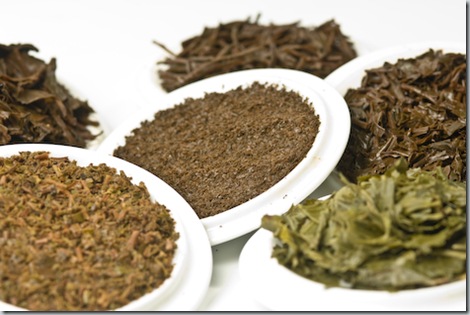Mastering the art of tea can take a lifetime, but understanding a few simple but important aspects of tea can be crucial to the appreciation of tea. Some of the ‘tea masters’ who have tasked themselves with educating tea drinkers about tea have unfortunately perpetuated some of the myths about tea. Chief amongst these is the common refrain about ‘Dust’ tea, meaning small leaf or fine grain tea.
Wikipedia suggests that, “Dust tea is a low-quality grade of fine grained black tea. Traditionally these were treated as the rejects of the manufacturing process in making high quality leaf tea like the Orange Pekoe. When leaves break or get crushed during the manufacturing process they are variously labelled as Broken Orange Pekoe, Fannings and dust based on the particle size. The smaller the particle, the lower the quality.”
Nothing could be farther from the truth. Tea – green and black – is produced from the shoots of the Camellia Sinensis or Camellia Assamica plant. The process varies slightly in different countries although in Sri Lanka most estates follow the traditional method where the leaves are picked by hand, then withered, rolled, fermented and finally baked. The manufacture is then complete although the ‘made tea’ goes through the final step of ‘sifting’. This grades the tea according to different particle sizes.
It is not true that, “the whole-leaf tea is sifted, and the dust that falls off of the whole-leaf tea is actually swept up and put into your tea bags,” as one ‘Tea Master’ explained to his class. If the quality of the leaf that is manufactured is good, and if the manufacture is monitored expertly, the result will be a variety of grades from small to large leaf. The intensity of the rolling process influences the proportion of the small leaf but the dire proclamations about the horrible standard of small leaf tea are more than a little exaggerated.
Naturally large or small leaf can be good or bad, depending on the plucking and therefore leaf standard, the quality of manufacture, the weather, the expertise of the teamaker and various other factors.The chief difference between good small and large leaf tea is its strength; the smaller grades, partly due to larger surface area in contact with water, offer thicker, stronger liquors whilst the larger, OP and Pekoe grades may maintain similar taste profile, but with much less strength.
The myth has some basis in fact though, for when the teabag came into common use, many tea packers used the opportunity of the now unseen tea leaves (hidden by the bag), to pack fibrous, flaky or mixed, poor quality, small leaf tea. That was the fault of the brand owners, not of the tea though.
Good quality, real leaf tea is undoubtedly the best option for discerning tea drinkers but the good Dust or Fannings tea in teabags can still offer a very good cuppa. The traditional teabag ‘filter paper’ absorbs 5-10% of the strength and some part of the quality in tea. When compared with the sins that many tea drinkers commit in not using good water, overboiling etc., that filter paper absorption factor is not a really big deal. There are teabags that help counter this especially the larger triangular teabag with the biodegradeable, woven material.
Yet, all things considered, a good quality tea that is expertly selected to overcome the constraints of the teabag paper, can offer an excellent cup of tea. Try a cup of our Watte, Single Region Tea in the traditional teabag and I know you will agree with me.
